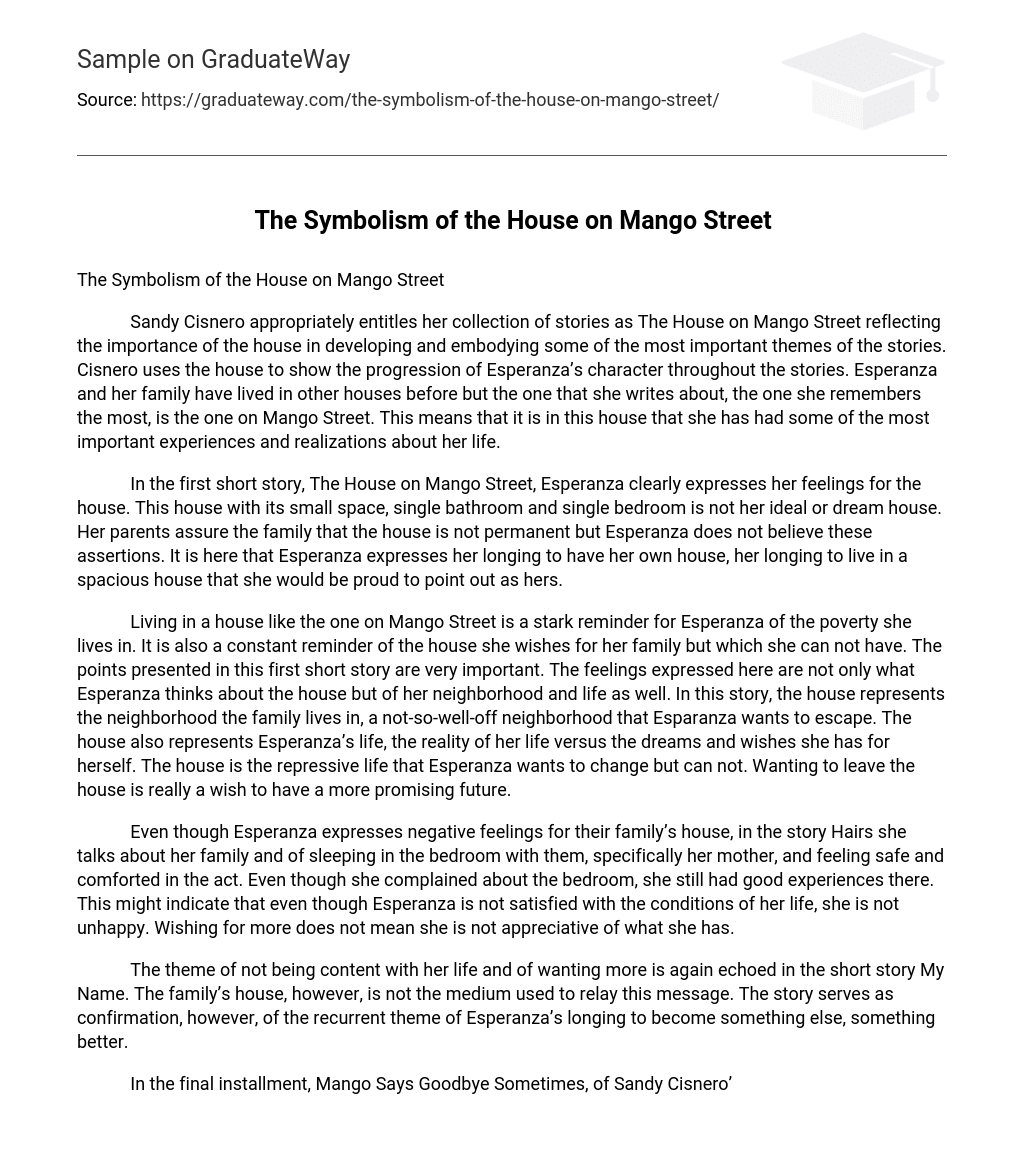Sandy Cisnero appropriately entitles her collection of stories as The House on Mango Street reflecting the importance of the house in developing and embodying some of the most important themes of the stories. Cisnero uses the house to show the progression of Esperanza’s character throughout the stories. Esperanza and her family have lived in other houses before but the one that she writes about, the one she remembers the most, is the one on Mango Street. This means that it is in this house that she has had some of the most important experiences and realizations about her life.
In the first short story, The House on Mango Street, Esperanza clearly expresses her feelings for the house. This house with its small space, single bathroom and single bedroom is not her ideal or dream house. Her parents assure the family that the house is not permanent but Esperanza does not believe these assertions. It is here that Esperanza expresses her longing to have her own house, her longing to live in a spacious house that she would be proud to point out as hers.
Living in a house like the one on Mango Street is a stark reminder for Esperanza of the poverty she lives in. It is also a constant reminder of the house she wishes for her family but which she can not have. The points presented in this first short story are very important. The feelings expressed here are not only what Esperanza thinks about the house but of her neighborhood and life as well. In this story, the house represents the neighborhood the family lives in, a not-so-well-off neighborhood that Esparanza wants to escape. The house also represents Esperanza’s life, the reality of her life versus the dreams and wishes she has for herself. The house is the repressive life that Esperanza wants to change but can not. Wanting to leave the house is really a wish to have a more promising future.
Even though Esperanza expresses negative feelings for their family’s house, in the story Hairs she talks about her family and of sleeping in the bedroom with them, specifically her mother, and feeling safe and comforted in the act. Even though she complained about the bedroom, she still had good experiences there. This might indicate that even though Esperanza is not satisfied with the conditions of her life, she is not unhappy. Wishing for more does not mean she is not appreciative of what she has.
The theme of not being content with her life and of wanting more is again echoed in the short story My Name. The family’s house, however, is not the medium used to relay this message. The story serves as confirmation, however, of the recurrent theme of Esperanza’s longing to become something else, something better.
In the final installment, Mango Says Goodbye Sometimes, of Sandy Cisnero’s series of stories, the theme of hoping for better things is resolved with Esperanza’s realization that the house is a necessary part of the future she will have. Even though she still continues to long and plan for a better house, her outlook on the house on Mango Street is no longer the same. She knows that it is something she will never truly leave behind.
The reality of the life Esperanza has at present is no longer as rough and harsh in her perception. There are many things that have added to the richness of her existence. The future house she wishes for will only be made so much better when she finally acquires it because of what she experienced in the house on Mango Street. This is not only because of the contrast provided but also because of the life lessons garnered from Mango Street. For Esperanza, there is no longer any shame in the circumstances of her life. The house, by the end of the story, becomes a representation of the journey Esperanza will need to take to reach the future she longs for.





